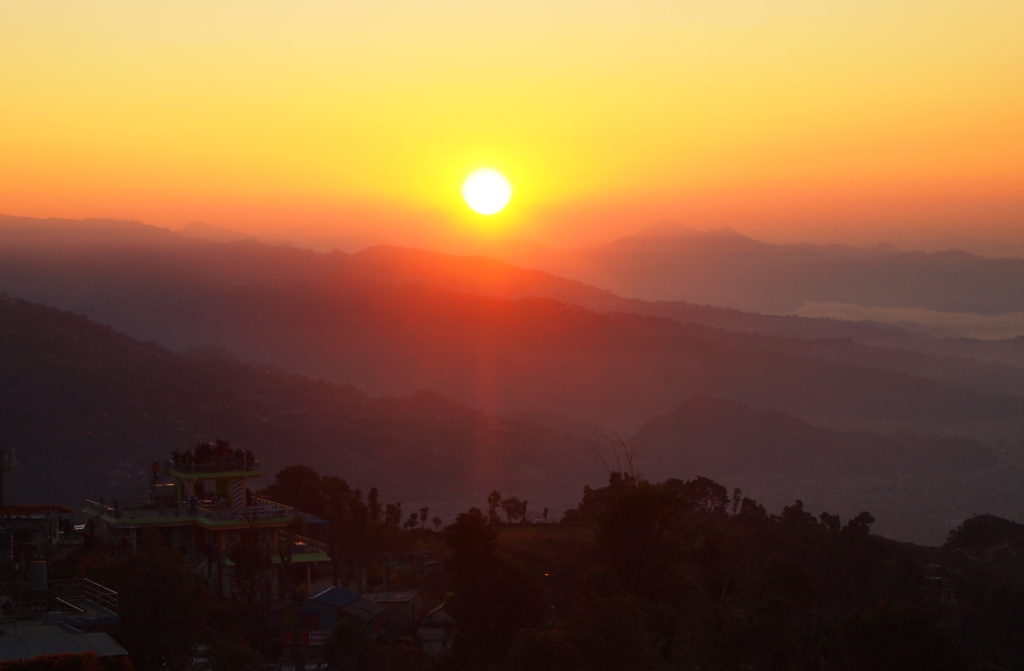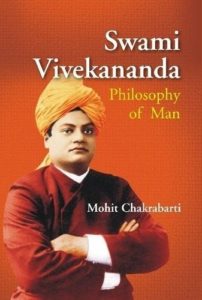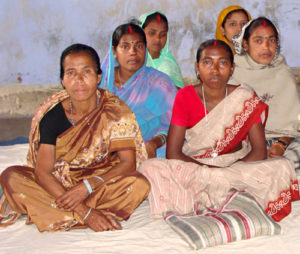Reality, relevance & rural India
 Today was another breathtaking day spent motorcycling through some of the most rough, rural and remote regions of Deoghar district, learning about and experiencing first-hand Chetna Vikas’s (CV’s) incredible work in women’s empowerment. This day, my guide and travel companion was Manoranjan, a “Master Teacher” who divides his work days between the CV office and a variety of villages where local women are being introduced to the world of literacy for the first time.
Today was another breathtaking day spent motorcycling through some of the most rough, rural and remote regions of Deoghar district, learning about and experiencing first-hand Chetna Vikas’s (CV’s) incredible work in women’s empowerment. This day, my guide and travel companion was Manoranjan, a “Master Teacher” who divides his work days between the CV office and a variety of villages where local women are being introduced to the world of literacy for the first time.
The TARAakshar program is India’s first computer-based literacy program that is specifically intended to render illiterate, rural women “functionally literate” in a span of 30 days. This means women are able to read and write their own names and addresses, to keep bank accounts, and to keep informed of basic, current events and information in their communities. To this end, the 30-day program is divided into 2 phases: in the first 18 days, women learn to identify vowels and consonants and practice word formation; in the final 12 days, women are focused on reading skills and capability.

In fact, in Deoghar district, there are 7 operational TARAakshar Centers, 3 of which are run by Chetna Vikas, and 4 of which are run by different NGOs. Today, our first stop was the nearby Dumariya Village, to visit the Jai Vasundhra TARAakshar Center. There, I was given the opportunity to sit at the front of the 8-student classroom and (through Manoranjan’s heroic interpretive efforts) to interact directly with the shy, reserved women working busily at their small, personal blackboards. Seated on the floor, the women were transcribing the Hindi letters that appeared on the laptop computer set on a chair in front of them, and in doing so, slowly learning the alphabet. This was “phase 1” of TARAakshar in progress.
Gradually, after introducing myself and asking each of the women to tell me her name, I encouraged them to tell me about this opportunity for literacy and how it has affected them. The women expressed a sense of satisfaction and said they were motivated by their studies so far. They said they were anticipating the pending “reading phase” of their program, and that they wished there would be additional courses after this TARAakshar cycle is complete.
Before we set out for our next village and TARAakshar Centre, the Jai Vasundhra Secretary, Laldeo Prasad, insisted on our acceptance of a customary Indian hospitality… Seated on outdoor chairs placed in the warmth of the late morning sun, Manoranjan and I were each served small dishes of a milky “sweet” – in this case, a cross between ice cream and yogurt – followed by a small cup of hot, masala chai.
Back on the bike and back on the road, Manoranjan announced over his shoulder to me, “I would like you to spend some time in my home”. It turned out we would drive past his home en route to our second village stop for the day, Sadodih, which loomed another 40 kms away. So, Manoranjan thought it would be a good opportunity for me to meet his 2 young daughters, Khushboo and Aanchal, and for us to rest-stop before heading further into the remote areas. As Manoranjan’s bike drove out along dirt roads that belied the family settlements contained within, my eyes searched for the building that might be his home. Finally, Manoranjan proudly announced, “This is my home”.
 Manoranjan and I spent about an hour, gathered with his wife and his two daughters, all of whom treated me with enthusiastic interest and gracious hospitality. I was humbled and perplexed by the degree of interest in my personal views of world events and of Indian culture, and mused uncomfortably at questions like “why is Osama bin Laden such a bad person” (!) Mostly though, I was able to share a love of reading with Manoranjan’s daughters, both of whom insisted I should borrow a book by one of India’s most famous spiritual leaders, Swami Vivekananda. Khushboo and Aanchal told me with animation and passion that Swami was an “unknown monk” whose inspiring personality became famously known both in India and in America during the last decade of the nineteenth century and the first decade of the twentieth. His vast knowledge of Eastern and Western culture as well as his deep spiritual insight, broad human sympathy, and colorful personality were particularly appealing.
Manoranjan and I spent about an hour, gathered with his wife and his two daughters, all of whom treated me with enthusiastic interest and gracious hospitality. I was humbled and perplexed by the degree of interest in my personal views of world events and of Indian culture, and mused uncomfortably at questions like “why is Osama bin Laden such a bad person” (!) Mostly though, I was able to share a love of reading with Manoranjan’s daughters, both of whom insisted I should borrow a book by one of India’s most famous spiritual leaders, Swami Vivekananda. Khushboo and Aanchal told me with animation and passion that Swami was an “unknown monk” whose inspiring personality became famously known both in India and in America during the last decade of the nineteenth century and the first decade of the twentieth. His vast knowledge of Eastern and Western culture as well as his deep spiritual insight, broad human sympathy, and colorful personality were particularly appealing.
In America, he became India’s spiritual ambassador and pleaded eloquently for better understanding between India and the New World in order to create a healthy synthesis of East and West, of religion and science. In India, Vivekananda is regarded as the patriot saint of modern India and an inspirer of her dormant national consciousness. Specifically, he preached “service to man” as the ideal and special form of worship for Hindus and Indians, devoted as they were to the rituals and myths of their ancient faith.
Eventually, Manoranjan and I were back on the road. And so, after a long ride in a new direction through Deoghar’s farthest borders, we finally arrived at Sadodih Village. In fact, by the time we had arrived, the dirt road we had been traveling toward Sadodih had long since ended, and we were riding unsteadily over dusty, unmarked earth and even through shallow river beds. I had begun to think this village was so unmarked by landscape that it might be impossible to find. But just then, a small collection of huts, shacks and earthen constructions indicated that we had arrived.
Incidentally, by now, I have also learned to notice that the gradual incidence of cows tethered to trees by ropes is also evidence of “ownership” and thus, evidence of an approaching / nearby village. Sadodih did, in fact, show evidence of these hulking, tethered animals, bloated and slow in the afternoon heat.
Almost immediately, Sadodih opened itself to me on a note of “difference”… There was a sense of struggle and exhaust that seemed to pervade the locals that hung about, staring wordlessly at Manoranjan and I as we disembarked the motorcycle and walked into the tiny TARAakshar classroom. And, in fact, the emotional atmosphere and experience of Sadodih’s TARAakshar classroom would prove to be entirely different from what I had seen just hours earlier in Dumariya. The fact is, the women in Sadodih live a much harder, more agricultural, and more basic existence, and literacy is perhaps not perceived as a pressing “need”.
 The women learners who were slowly gathered on the floor in front of me, looked up and introduced themselves with tired eyes and faces set with the resolution and wear of “hard living”. They answered my questions in a perfunctory, unsmiling way, expressing a lack of connection to their studies with TARAakshar. They told me that they are not sure why they are learning to read and to write, and asked me if they could learn “handicrafts” instead. They said they appreciated being able to read and write their own names, but they are not sure why or how they will use this knowledge. I learned that these women are not supported by their families to participate in the TARAakshar program, and that as such, they must take time each day from a long series of chores and duties in order to partake.
The women learners who were slowly gathered on the floor in front of me, looked up and introduced themselves with tired eyes and faces set with the resolution and wear of “hard living”. They answered my questions in a perfunctory, unsmiling way, expressing a lack of connection to their studies with TARAakshar. They told me that they are not sure why they are learning to read and to write, and asked me if they could learn “handicrafts” instead. They said they appreciated being able to read and write their own names, but they are not sure why or how they will use this knowledge. I learned that these women are not supported by their families to participate in the TARAakshar program, and that as such, they must take time each day from a long series of chores and duties in order to partake.
I left Sadodih Village and the TARAakshar Centre there feeling somewhat defeated and pensive. I struggled with the sense that there was a missed opportunity in Sadodih – the opportunity to truly connect to the reality of rural India and to offer “relevant development”. That is, the disconnection of the Sadodih women from the laudable intentions of the TARAakshar program clearly underscored the essential importance of “relevance” and “applicability” of the development worker’s intentions. It is not enough to simply introduce a perceived solution to a perceived problem…
It is absolutely critical to foster and facilitate an ongoing participatory process in developing communities (especially those that are rural) so that the “definition” of a “problem” as well as its supposed “solution” emerges clearly from the life and experience of those directly involved.
~~~~~~~~~~~~~~~~~~
[This is an excerpt from a journal I kept while working in India years ago. I lived and worked in a very remote, rural town called Deoghar, near the border of Bangladesh. This specific journal entry was written on February 15, 2008.]